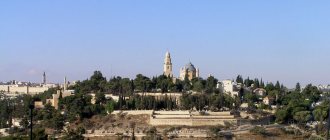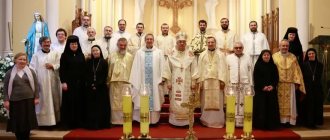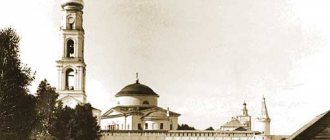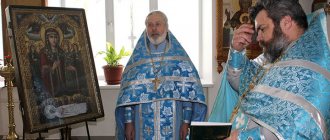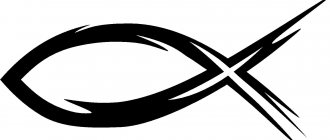- Nails from the Life-Giving Cross
- Crown of Thorns
- Spear of Longinus
- Shroud of Turin
- Sir
- Veronica Plat
- The Savior Not Made by Hands, or Mandylion
- The Robe of Jesus Christ, or the Robe of the Lord
- Holy Grail
- Foreskin of Jesus Christ
Relics associated with the earthly life of the Savior are the greatest value for believers. Majestic cathedrals were erected to store rarities, pilgrims come to them with prayers, and legends about miracles performed are passed on from mouth to mouth. Our article will tell you about these shrines!
Nails from the Life-Giving Cross
It is not known exactly how many nails were used in the crucifixion. There are only three of them on traditional icons. However, the skeleton of a man who died from such an execution, found by archaeologists, was pierced with four points. At the same time, the legs were nailed to the crossbar from the sides, as if clasping it.
These Instruments of the Passion of Christ were found by Empress Helena next to the True Cross. Unfortunately, the shrines turned out to be very easy to fake, which is what the scammers took advantage of. In particular, the French theologian John Calvin reports 14 such relics kept in churches in Milan, Rome, Venice, Paris and Cologne. In addition, some nails were reforged into other religious objects - for example, the Byzantine ruler Constantine made a helmet and bridle for his horse from them, and another rarity was inserted into the Iron Crown of Lombardy.
Iron Crown of the Lombard Kingdom
Stone of Ibrahim (Mecca, Saudi Arabia)
When the prophet Ibrahim, by order of Allah, was rebuilding the Kaaba after the flood, and its walls rose higher than his height, so that he could no longer reach them, his son Ismail, who was helping him, rolled a stone. Ibrahim stood on it and completed the construction of the structure. It is believed that during construction a miracle happened: the stone became soft, and foot prints remained on it. The stone is revered by Muslims: next to it, imams lead the prayers of the faithful, several million of whom come to Mecca every year. By the way, the holiday of Kurban Bayram (Il al-Adha), which coincides with the pilgrimage to Mecca, is also associated with the name of Ibrahim and his son Ismail. Ibrahim was about to sacrifice his son, but at the decisive moment he was replaced by a lamb. In the Christian and Jewish traditions, this is the story of Abraham and Isaac.
Another Muslim shrine is built into the eastern corner of the Kaaba - the Black Stone, or the Stone of Forgiveness. According to legend, he was sent to Adam after his repentance. Adam founded the Kaaba, and the prophet Ibrahim built a stone into the wall. It is believed that the stone was originally white, but gradually turned black, saturated with the sins of mankind.
Crown of Thorns
These are branches of white thorns woven into a ring, placed on the head of the Lord during His desecration by Roman soldiers. The diameter of the shrine is 21 cm. At the end of the 19th century. it was sealed in a glass flask.
Until 1204, the Crown was located in Constantinople, in the Church of the Virgin Mary. This was reported by the Ephesian Metropolitan Nicholas Messarit. But after the city was attacked by the Crusaders, the relic came to the Latin Emperor Baldwin II. Due to financial difficulties, he pawned the shrine to the Venetians, from whom King Louis IX bought it, paying 135 thousand gold livres.
Crown of thorns in Notre Dame de Paris Cathedral
Beard of the Prophet Muhammad (Istanbul, Türkiye)
According to legend, after the death of the Prophet Muhammad, his beard was shaved and preserved by one of the barbers close to him. It is believed that this particular beard is on display today in the Topkapi Palace in Istanbul. Unlike many sacred places for Muslims, not only those professing Islam can get there. The palace itself also deserves attention. It was built at the end of the 15th century. and for five centuries served as the main residence of the Turkish sultans. This is a huge complex consisting of many office and residential premises, with a rich collection of porcelain. In addition to the beard of the Prophet Muhammad, Christian relics are also kept here: a particle of the relics of John the Baptist, the staff of Moses and the sword of the Prophet David.
Several hairs from Muhammad's beard ended up in the Hazratbal Mosque in Srinagar, India, and in the Tyumen Regional Museum. The relic came to Russia in the 19th century. thanks to the Tyumen merchant and philanthropist Nigmatulla-Haji Karmyshkov-Seidukov. At first it was kept in the mosque, and after the revolution of 1917 it was transferred to the museum
Spear of Longinus
According to the Gospel of John, this is the name of the lance that the legionnaire thrust into the hypochondrium of the crucified Creator. Legends say that the relic was owned by the emperors Constantine the Great and Justinian, the king of the Goths Theodoric, the savior of Europe from the Arabs Charles Martell and Frederick Barbarossa.
Several similar relics are kept in churches. In particular, this is a spear from the Vatican, a Viennese spear (also known as the “Spear of Destiny”; it was what Hitler was hunting for) and a shrine from the Armenian monastery of Etchmiadzin.
Vienna spear, spear from the Vatican (photo does not exist), spear in Etchmiadzin. Armenia
Shroud of Turin
The relic is a four-meter linen cloth with numerous dark spots. These are traces of the blood and sweat of Jesus Christ, left after Joseph of Arimathea covered the body of the Messiah with a burial shroud. And if you look at the negatives of photographs of the Shroud, you can see that the prints form a human silhouette! Folded arms, body, legs and even facial features are visible. Currently the shrine is kept in the Cathedral of St. John the Baptist (Turin, Italy).
However, the church does not recognize this object as sacred, since its reliable history begins only in 1353. There are assumptions that the image was created by the medieval Italian painter Giotto di Bondone. And carbon dating showed that the fabric of the Shroud was woven between 1275 and 1381.
Cathedral of Saint John the Baptist in Turin
After the Council of Nicea, on the orders of Emperor Constantine, a whole delegation went to Judea, and hundreds of years after the crucifixion of Jesus, all the holy places were found - the cave in which he was born, and the crown of thorns, and the nails driven into the body of Jesus, and even his umbilical cord , circumcised at birth... In various churches there are now several dozen nails with which Jesus was crucified (according to the Bible, there were only 4 of them), there are so many thorns from a crown of thorns that it would be enough for 5-10 crowns.
Even in the Middle Ages they said that “if you collect all the particles of the cross of the Lord together, not every ship can withstand such a load.” There are about a dozen spears with which, according to legend, Jesus was crucified on the cross, there are about a dozen in the world. There are as many as 13 circumcised foreskins of Jesus. In general, we found everything we wanted to find, exactly where we wanted to find it. All these finds are fake. THE HOLY SHROUD OF CHRIST
According to biblical Scripture, Mary Magdalene was the first to discover the shroud in the empty tomb of Jesus Christ.
Mary took this shroud out of the crypt and gave it to the mother of Jesus. The Virgin Mary cherished this memory of her innocently injured son as a great value. And she took her with her to Gaul (France). She kept this relic until the last days of her life. After the death of Mary, the shroud passed to the daughter of Jesus Christ, who married a local nobleman. The Shroud, as a great relic, was kept in deep secrecy in a special iron box. The earliest legends about the Holy Shroud date back to the 7th century. The records of that time speak of a Linen that covered the most pure body of the Savior, on which His image remained. At first, while there was persecution of Christians, the Holy Shroud of Christ was kept secret by believers. When these persecutions stopped, the Shroud was kept by the Byzantine emperors - in the imperial chapel at the Church of Our Lady of Blachernae. They jealously guarded it and did not show it to the people for a long time. Subsequently, the Shroud began to be taken out of the temple, unrolled, and the people came to worship the shrine, on which “the Face of the Lord could clearly be seen.” However, another question arises: where was the Shroud kept before it came to Constantinople? Evangelists say that the shroud with which the body of Jesus Christ was wrapped after his burial lay on the floor of the burial cave. The first to see her were His disciples, John and Peter, and the myrrh-bearing women. According to legend, the Shroud was first kept by the holy Apostle Peter, and then passed from student to student. It is practically not mentioned in the writings of the pre-Constantinople era. It was a great shrine, and information about it could serve as a reason for pagan authorities to search for it. Reports about the Shroud began to arrive after the triumph of Christianity under Emperor Constantine. It is known that it was Saint Pulcheria, sister of Emperor Theodosius VI, who placed the Shroud in the Basilica of the Blessed Virgin Mary in Blachernae. In 640, the Gallic bishop Arnulf, describing his pilgrimage to Jerusalem, mentions the Holy Shroud and indicates its exact dimensions. The transfer of the Shroud from Constantinople to Jerusalem is probably connected with the development of theomachism in Byzantium and the danger of the destruction of this shrine. Robert de Clari, chronicler of the Fourth Crusade, wrote that during the defeat of Byzantium, the Shroud "disappeared so that no one knew what became of it." Another chronicler, Count Riant, said that during the sack of Constantinople, the Blachernae Chapel was not touched by the crusaders. Bishop Garnier de Trenel, who was with their army, was entrusted with guarding all the relics of the imperial chapel. But the bishop soon died, leaving behind a list of objects he protected, in which the Holy Shroud is not mentioned. Many of the items listed were sent to Europe by him, but the Shroud was not among them. There was also no information about where she went. Subsequently, researchers suggested that the bishop kept the Shroud as the most important of the shrines entrusted to him. Perhaps he himself wanted to bring her to his hometown of Troyes, but death prevented him from realizing this intention. Or maybe he bequeathed one of the main knights to take the Shroud to Champagne? However, since then there has been no historical information about where and who owned this shrine. But in 1353, Count Geoffroy de Charny I donated the Shroud to the abbey, which he founded near Troyes, as the original linen with which the body of Jesus Christ was entwined when he was taken down from the cross and buried. There is no exact information about where de Charny received the Shroud; it is only known that from time immemorial it had been in his family castle and allegedly went to de Charny’s ancestor as war booty from the East. The rumor about the miraculous Shroud quickly spread among the people, and crowds of pilgrims flocked to Troyes to worship the shrine. However, Bishop G. Poitiers quickly stopped this pilgrimage, since he himself did not believe in the authenticity of the Shroud and considered the face of the Savior depicted on it to be the work of a bad painter. Soon the Shroud was returned to the Count de Charny, and he kept it in his possession. However, here we should remember the special value of the messages of Nicholas Mazarite, who saved the Holy Shroud from fire back in 1201: “The funeral vestments of Christ. They are made of linen. They are still fragrant with the anointing; they resisted decay because they covered and clothed the naked, myrrh-strewn Body of the Infinite in death.” Nicholas Mazarite was struck by the fact that Jesus Christ on the Shroud was completely naked, and no Christian artist could take such liberty. Worship of the Shroud resumed in 1389, but Peter d'Arcy, the new Bishop of Troyes, also did not want to believe in the authenticity of the shrine. To put an end to this controversial issue, he sent a message to Pope Clement VII, in which he outlined his conclusions about the authenticity of the Shroud. The bishop attached to the message a letter, allegedly found by him, in which some unknown painter admits that he painted the Shroud. The Pope reacted favorably to this message and with his bull ordered that the Shroud be considered a simple painting. The shrine returned to Charny Castle again, and in 1452, Marguerite de Charny, one of the count’s heirs, gave the Shroud to her friend, the Duchess of Savoy. Louis I of Savoy, the husband of the Duchess, built a beautiful chapel in the city of Chambery for the precious relic, where it was solemnly brought in 1502. However, a fire that happened a year later almost destroyed part of the chapel. The Shroud almost died, but the fire did not touch the image itself. Only on the bent edges there were traces... Silk patches were then applied to the burnt places, and two years later, for greater strength, the edges of the Shroud were bordered with a special fabric. Many shrouds had been shown in different cities before, but only this one was accepted by the mass consciousness as genuine. It burned three times and miraculously survived. To clean it from soot after the fires and to ensure that it was not painted, the Shroud was washed several times and boiled in oil, but the image remained. In 1578, Charles Barromeno, the elderly bishop of Milan, went on foot to Chambery to venerate the Holy Shroud. To save the elder from crossing the winter Alps, the Shroud was brought out to meet him. This meeting took place in Turin, in the Cathedral of St. John the Baptist, where the Shroud is kept to this day. It was folded and placed in a metal casket with several locks, the keys to which were held only by the Pope, the Prince of Savoy and the Archbishop of Turin. The Shroud is a thin linen cloth 4 meters 36 centimeters long and 1 meter 10 centimeters wide, woven in a 3x1 zigzag. Such fabrics were made in the Middle East (in particular, in Syria, which is why they began to be called “damask”) in the 2nd-1st centuries BC. In earlier and later times, such fabrics, which were very expensive, are unknown. In addition to flax, scientists found several cotton fibers of the Western Asian type in the fabric. The imprints of the coins that covered the eyes of Jesus Christ also testify to the ancient age of the Shroud. The Mite of Pilate is a very rare coin and was only minted around 30 AD. The inscription on it - TIBERIOV KAICAROC (EMPEROR TIBERIUS) is misspelled: CAICAROC. Coins with such an error were not known to numismatists until the publication of the photograph of the Shroud, and even after that only five such coins were discovered in different collections. On the surface of the Shroud, yellowed with time, brown and reddish-purple spots are visible, their arrangement creating the shape of a human body in front and behind. The face of the Savior falls on half the entire length of the Shroud, and the chest and other parts of the body on the front side continue to the end of one half of it. The dorsal side (starting from the back of the head) occupies the other half, and, moreover, in such a ratio to the facial image, which could only be obtained if the buried person, being laid on his back along one length of the Shroud, was then covered with its other half over the head along the entire length bodies. When the Shroud was exhibited at the International Exhibition of Religious Art in 1898, controversy reignited over its authenticity. Some saw the image on the Shroud as poor painting that did not deserve special attention. Others, who were attentive and impartial, came to the firm conviction that this was not a painting and that the image came directly from the body of a deceased person. For archaeologists, the Shroud was a completely inexplicable object, since nothing like it had ever been encountered before. The shroud was hung high above the arch, and before the exhibition closed they decided to photograph it. Archaeologist and amateur photographer Secondo Pia took two photographs. One negative turned out to be spoiled, and the other (60?50 centimeters) in the evening of the same day, May 28, he developed and... became numb. The result was a very clear positive image of a person buried after crucifixion - with traces of flagellation on his back, wounds on his arms and legs, in his sides, with traces of a crown of thorns on his forehead and head. On the hands, the wounds were not on the palms, but above the bend of the hand. Drops of bloody sweat streak the face, and blood clots form on the body. Despite the traces of wounds, the photographer saw in front of him a photographic portrait of the Savior - a Face with an unearthly expression of beauty and nobility. S. Pia involuntarily gained and grew stronger in the belief that until now everyone had seen only a negative image of the Face and Divine Body of Jesus Christ on the canvas. The photographer sat all night in reverent contemplation, without taking his eyes off the portrait of Jesus Christ who so unexpectedly appeared in his house. “The Holy Shroud,” the photographer reflected, “in some unimaginable way itself represents a photographically accurate negative, and even with enormous spiritual content!” This Holy Shroud, this amazing human-sized negative, is more than 1000 years old! But our newly invented photography is only 69 years old!.. Here, in these brown prints from the Holy Sepulcher, lies an inexplicable miracle.” On that memorable night, the photographer realized that the Shroud was not made by hands, that not a single artist of antiquity could draw it, make, essentially, an invisible negative. Later, the Shroud of Turin was photographed many times in different rays of the spectrum - from X-rays to infrared radiation. It is studied by criminologists, historians, physicists, chemists, doctors, botanists, numismatists and people of other professions. Although the belief has been repeatedly expressed that the Shroud is not made by hand, there have been attempts to attribute it to the brushes of the great Leonardo da Vinci or some other famous artist. But the Shroud reflects such anatomical details in the structure of the human body that were not known even to the great medieval masters. There are no traces of paint associated with the image, only in one place it is slightly stained with paint. This happened, perhaps, in 1516, when A. Dürer drew a copy from it. French scientists, doctor of chemistry P. Vinson and professor of physics Colson, having seen the photographs, began to study the prints on the shroud. Over the course of two years, scientists carried out a number of physical and chemical experiments and came to the conclusion that under those burial conditions, as the evangelists talk about it, prints could have been made on the canvas. The image on the Shroud could not be forged, since the artists of previous times depicted the crucified Jesus Christ in a completely different way, and there is no drawing in the strict sense of the word on the shroud: there are only spots on it without sharp outlines. Where the veil was in close contact with the body, these outlines are more intense and distinct. Further research showed that a body exposed to ammonia fumes (wrapped, according to the custom of the ancient Jews, in shrouds soaked in aloe juice) could produce an imprint on the shroud in exactly the same way as in the case of the Shroud of Turin. Subsequently, P. Vinson summarized his research in a book in which he, in particular, wrote: “The Shroud of Turin represents an amazing phenomenon from a scientific point of view. Without consistent and reliable scientific data to support its authenticity, it itself irrefutably clearly speaks of its non-man-made nature: the history of its origin is inscribed on itself.” News of the research of French scientists appeared in many periodicals in 1902. They also appeared in Russian magazines and newspapers, as a result of which in Russia the interest in the Shroud was so exciting that many Russian people promised themselves to sooner or later visit Turin to venerate the Holy Shroud of Christ. The question of the origin of the image on the Shroud is of interest not only among scientists. In the mid-1980s, an interesting version was put forward by O. Khmolovsky from the Leningrad region. He believes that the image on the Shroud could have been left... by lightning. And he even cites a case where a uniform belt buckle and a coin in his pocket were imprinted on the body of a soldier killed by lightning. “Let us assume,” continues O. Khmolovsky, “that while the body of Christ was being wrapped in the shroud, rain poured down and the wet linen stuck to the body. People hurried to cover, and the body of Christ was laid on the ground. Lightning that struck nearby “glassed” onto the shroud and made an imprint.” However, physicists (for example, L. Pekar) claim that lightning, even a hundred lightnings, cannot imprint an image on anything except emulsions prepared in a special way and for special purposes. Even if we assume that a substance of record sensitivity was formed, then even in this case, from daylight or twilight light, the details (as in any photograph) would lose clarity in a matter of seconds. Doctor M. Ilyin approached the question of the origin of the image on the Holy Shroud from a medical point of view. He believes that the person whose image was preserved on the Shroud was ill, and the mysterious photograph was obtained due to the peculiarities of his rare illness. This disease is called porphyria, when the patient produces porphyrins—pigments based on a structure of four pyrrole rings—along with the secretions. In the light, pathological porphyrins react and turn both the secretions themselves and the tissue on which they fall red and brown. It is not our task to describe all the studies of the Holy Shroud that have been carried out over the decades. But we will still tell you about one discovery that was made by US Air Force experts Jackson and Jumper and which to this day causes headaches for physicists and opticians. Jackson and Jumper processed the images of the Shroud with a computer analyzer, which converts the intensity of the shades and tones of the image into digital form. Then, using these data, many cardboard plates of different heights were made. Placed one after another in a certain order, these plates formed a relief that stunned the researchers. They saw a three-dimensional image of a man on the Shroud! Such a result cannot be obtained after similar processing of simple photographs or drawings. And no one can still explain how a three-dimensional version could be “encoded” in the flat outline of a human figure on the Shroud... Shroud of Turin
CROSS
In order to find the Cross of the Lord, Queen Helena went to Jerusalem in 326. It was pointed out to her that the Cross of the Lord was buried in the ground at the place where the pagans had erected a temple in honor of Venus. When, by order of Helen, they broke down the building and began to dig the ground, they found three crosses and near them a tablet with the inscription: “Jesus of Nazareth, King of the Jews.” To find out which of the three crosses the Savior was crucified on, they began to place them on the deceased in turn. No miracle happened from the two crosses. When they laid the third cross, the deceased was resurrected, and thus they recognized the cross of the Savior.
After Saint Helena found the original cross, she ordered the foundation of a church at the site of the crucifixion, in which the relic began to be located.
The church was founded in 327. After 10 years, numerous pilgrims and pilgrims began to take away this cross piece by piece. Thus, after some time, only a small part of the shrine remained. August 14 - origin of the Honest Trees of the Life-Giving Cross , popularly called the “Honey Savior”. March 19 - Finding of the Honest Cross and nails by Queen Helena in Jerusalem. In the 7th century, the Persians captured Jerusalem and destroyed the church to the ground. On this day, another event related to the Cross of the Lord is remembered - his return from Persia after 14 years of captivity back to Jerusalem. The Persian king Khosroes II, in the war against the Greeks, defeated the Greek army, plundered Jerusalem and took captive the Life-Giving Cross of the Lord and Patriarch Zechariah (609-633). The cross stayed in Persia for 14 years, and only under Emperor Heraclius (610-641), who, with the help of God, defeated Khosroes and made peace with his son, was their shrine returned to Christians - the Cross of the Lord. With great triumph, the Life-Giving Cross was brought to Jerusalem. Emperor Heraclius, wearing a royal crown and purple, carried the Cross of Christ to the Church of the Resurrection. Patriarch Zechariah walked next to the king. At the gate by which they ascended to Golgotha, the emperor suddenly stopped and could not move further. The Holy Patriarch explained to the Tsar that the Angel of the Lord was blocking his path, for He who carried the Cross to Golgotha to redeem the world from sins, performed His Way of the Cross in a humiliated form. Then Heraclius, taking off his crown and purple, put on simple clothes and freely carried the Cross of Christ into the temple. In his homily on the Exaltation of the Cross, Saint Andrew of Crete says: “The Cross is erected, and all the faithful flock together, the Cross is erected, and the city triumphs, and the peoples celebrate.” The Crusaders, who liberated Jerusalem from the Arabs in 1099, built the Church of the Holy Sepulcher on Calvary, which has survived with modifications to this day. In 1187, Jerusalem was captured by the Sultan of Egypt and Syria, Saladin. And this time the remains of the Life-Giving Cross were completely lost. Feast of the Exaltation of the Cross of the Lord (Approval of the Cross) - September 27
.
Saints Constantine and Helen around the Life-Giving Cross of the Lord. Painting by V.K. Sazonov, XIX century
See Holy Cross nunnery of the city of Murom. Monastery of the Life-Giving Cross of the Lord.
The life-giving Cross of the Lord in the Church of St. John Chrysostom in the village. Godenovo.
Divine service
Orthodox Church
The service is similar to the service of the Week of the Worship of the Cross (3rd Sunday of Great Lent) and the Origin (wearing down) of the venerable trees of the Life-giving Cross of the Lord (August 14). The evening before (that is, September 26), an all-night vigil is celebrated. According to the rules, this all-night vigil must include small vespers. At Little Vespers, the Cross is transferred from the altar to the throne. However, now the celebration of Little Vespers can be found in Russia only in rare monasteries. For this reason, in parish churches the Cross is placed on the altar before the start of the service (the Gospel is placed behind the antimension). At Matins, the Gospel is read in the altar, after reading the Gospel, “Having seen the Resurrection of Christ” is sung, regardless of the day of the week. Kissing the Gospel and anointing with oil after reading the Gospel are not performed. Before the Great Doxology, the rector puts on full vestments. During the Great Doxology, while singing the Trisagion, the abbot carries out the cross. Holding the Cross on his head, the rector, preceded by a deacon with a candle, constantly incense the Cross, carries it out through the northern door; stopping at the pulpit, he says “Wisdom, forgive,” then, while singing the troparion “Save, Lord, Thy people and bless Thy inheritance, granting victories to the resistance, and preserving Thy residence by Thy Cross,” he carries the Cross to the middle of the temple and places it on the lectern . Then the troparion “We worship Your Cross, O Master, and we glorify Your Holy Resurrection” is sung three times, during which prostrations to the ground are made three times. Then special stichera are sung, during which the priest anoints with oil, and then the special litany, the usual end of the all-night vigil and the first hour. At the liturgy, instead of the Trisagion, “We worship Your Cross, O Master, and glorify Your Holy Resurrection” (without prostrations). According to tradition, on this day it is customary to wear purple vestments. The cross remains on the lectern until October 4, the day of the Exaltation. To be given at the end of the liturgy after the prayer behind the pulpit, while singing the troparion and kontakion to the Cross, the Cross is carried by the priest to the altar through the Royal Doors.
Catholic Church
In the extraordinary form of the Latin rite, the service begins on the eve of the evening feast, if September 14th falls on a Sunday or is celebrated as a 1st class feast. Usually it begins with Matins, which has 3 nocturnes. The first is a reading from the Book of Numbers (Num. 21:1-9). The first nocturne ends with a drawn-out responsory in which the return of the Cross from Persia under the Emperor Heraclius is mentioned: “Haec est arbor dignissima, in paradisi medio situata, in qua salutis auctor propria morte mortem omnium superavit. V: Crux praecellenti decore fulgida, quam HERACLIUS imperator concupiscenti animo recuperavit.” The second nocturne features a historical reading about the return of the Cross. On the third nocturne, a reading from the sermon of St. Pope Leo the Great. The missal has its own form for the festive mass. The service opens with the introit Nos autem to words from the Epistle of St. Paul to the Galatians (6:14). The first reading is from the Epistle to the Philippians (Phil. 2:5-11), during the reading of which kneeling is required on the words: “so that in the name of Jesus every knee should bow.” Second reading from the Gospel of John (John 12:31-36). Preface on the Holy Cross. In general, the proper texts of the Mass and the officium are in many ways similar to those used during Passion (2 weeks before Easter).
WREATH AND NAILS
The wreath and nails were hidden by Joseph of Arimathea immediately after Jesus was taken down from the cross. He passed these relics on to his children. After the destruction of Jerusalem by the Romans in 70, Joseph's children were forced to move to Babylon. The wreath and nails were kept for a long time by Joseph's relatives, who did not know what to do with them next. One of the descendants wanted to throw out strange, from his point of view, objects from the house. But one day he had an amazing dream - an unknown woman approached him and promised that their family would experience great luck if he gave a wreath and nails to the Christian community, and even indicated the place where she could be found. A descendant of Joseph of Arimathea immediately set off on the journey, but not for the sake of money, but to fulfill the request of the requester. He found the indicated place, told the Christians his dream and gave them a wreath and nails. The Christians realized that their unexpected guest had seen the Mother of God in a dream, and therefore generously gave him gifts. With the money received, the family purchased an abandoned plot of land that they had dreamed of for so long. In the spring, when the men began to plow the land, the plow touched some object - it turned out to be a jug filled with gold coins. The wreath from the monks ended up in Constantinople. In the 13th century, the Emperor of Constantinople sold it to the French King Louis IX. Now what remains of the wreath - several twigs without a single thorn - is kept in Paris in the Notre Dame Cathedral. None of the nails have survived to this day. They were repeatedly sawed into pieces and melted down, so there is only one, which is kept in the Church of the Holy Cross in Rome. The shape and size of the nail exactly corresponds to the nail mark on the shroud.
Basilica of the Holy Cross of Jerusalem in Rome The temple was built on the initiative of Constantine's mother Helena
FORESKIN
During a trip to Egypt, Joseph and Mary, the parents of Jesus, settled down to rest in a deserted place under a lonely tree.
Suddenly, steppe wolves howled nearby. Mortal danger loomed over the entire family. Mary and Joseph quickly gathered their things and left the dangerous place, waking Jesus in the process. The wolves approached the tree and could no longer move anywhere, as if an invisible wall was in front of them and blocked the way. The animals rushed around in circles for a long time until, exhausted, they lay down under a tree. During this time, the family went to a safe distance, and Jesus performed one of his first miracles, which no one even noticed. After some time, Maria discovered that in her haste she had defended the small leather bag in which her son's foreskin was kept. A life-giving source of clean water subsequently appeared in this place. And the once deserted area was transformed into an area of blooming oases. January 14 - Circumcision of the Lord
.
Orthodox Church Holidays.
Church of the Holy Sepulcher
Copyright © 2015 Unconditional love
Sir
This shrine, also known as ubrus and head heavy, is a piece of linen fabric measuring 84*53 cm. The material is covered with blood stains and ichor, because, as the Gospel says, it was used to cover the face of God’s son when he was taken down from the cross. The name of the relic comes from Lat. "sudarium" - "handkerchief for wiping sweat."
The history of the rarity is described at the beginning of the 12th century. Bishop Pelagius. According to it, the sir was taken from Jerusalem in 614. From Alexandria the scarf came to Oviedo (Spain). To store the relic, the Camara Santa Chapel was built, and then the Cathedral of San Salvador. There is another similar shrine in Bruges (Belgium), where it ended up after the Second Crusade.
An oak casket, upholstered with silver plates with a chased pattern, in which the Sudar is kept. Oviedo, Spain
Arab conquest
The Arabs captured Jerusalem in 637. Before the capture of Jerusalem, the Battle of Yarmouk took place on August 20, 636. The troops of Caliph Umar ibn al-Khattab (or Omar I) defeated the Byzantines, which made it possible for the caliphate to “squeeze” Syria and Palestine from Byzantium. But despite the concerns of the city residents, the caliph did not set the sacred building on fire. “In the name of Allah... your churches will be kept safe and sound and will not be captured by Muslims and will not be destroyed,” he said.
Dome of the Rock Mosque. (wikimedia.org)
Veronica Plat
This image of the Savior appeared on the scarf of the pious virgin Veronica, which she handed to the Messiah going to Golgotha. The distinctive features of the shrine are the distorted features of Jesus Christ and the crown of thorns on His head.
A similar episode is not mentioned in the Gospels, but the legend of the miraculous Plath is still very popular. There are several copies of the relic, the main one of which is in the Cathedral of St. Petra (Vatican, Rome). Other similar rarities are the Veil from Manopello and the Holy Face from Alicante.
Veronica's Plaque is kept in St. Peter's Basilica in Rome
Christian shrines associated with the life of the Blessed Virgin Mary
Robe of the Virgin Mary
The Robe of the Virgin Mary is the robe of the Blessed Virgin Mary, which according to legend was stolen by Byzantine aristocrats from an elderly Jewish woman in Nazareth in the 5th century. It is believed that the robe was in the Blachernae Church for a long time, but after a fire in the church in 1434, the trace of the robe was lost.
Today it is known that the robe or its particles are found in different places: in Russia in the Ark of Dionysius, in the Lateran Basilica of Rome, the Blachernae Church in Zugdidi and a number of other places.
Belt of the Virgin
The Virgin Mary's girdle is not mentioned in any source until the 9th century. In the 20th century, 2 stories about the belt became known: according to the first legend, the belt was kept in the city of Zila, and then in Constantinople, and according to the second legend, the belt was kept in Jerusalem, and then in Constantinople. After the fall of Constantinople, several locations of the relic are known.
The Honest Belt, which touched the Most Pure Womb of the Virgin Mary, which bore the Creator, and moistened with drops of milk that nourished the One who is the Life of the world, is for all Christians evidence of salvation and faith in Christ.
The Savior Not Made by Hands, or Mandylion
The Savior Not Made by Hands is an analogue of the Plata of Veronica, which exists in the Orthodox tradition. As legend says, it was created by the Son of God himself in response to the request of the pagan king Abgar. He suffered from leprosy and sent messengers to the Savior, begging Him for healing. The Messiah had mercy on the ruler and, having washed himself, wiped his face with an ubrus (towel), on which the imprint of the holy face appeared.
The fabric with the miraculous image was kept in Edessa for a long time, until in 944 it was bought by the Byzantine emperor Romanos I Lekapin. But when Constantinople was sacked by the crusaders in 1204, the relic was lost. The closest copies to the original are considered to be the Mandylion from the Temple of San Silvestro in Capite (Vatican) and the image from the Armenian Church of St. Bartholomew in Genoa.
Mandylion from the Temple of San Silvestro in Capite. Vatican
Buddha's Tooth (Dalada Maligawa Temple, Sri Lanka)
In the city of Kandy there is a repository of the sacred talisman and symbol of Buddhists - the tooth of Buddha. It is believed that he bestows wisdom, courage and the fulfillment of all desires. The relic is so important and sacred that almost all the time it is locked away in seven caskets nested inside each other. Only a select few, such as members of the royal family, have the opportunity to glimpse great value once every few years. Despite this, it’s worth coming here: Buddhists believe that the tooth “works” even at a distance. The Dalada Maligawa temple itself is also interesting. Its interior decoration is striking in luxury.
In honor of the sacred tooth, the Esala Perahera festival has been held for several hundred years, lasting 14 days. The main event is a procession of elephants in magnificent decoration, accompanied by music, dancing and torchbearers. This is the only day of the year when the Buddha's tooth box is taken out of the temple.
The Robe of Jesus Christ, or the Robe of the Lord
This tunic was given by lot to one of the soldiers who crucified Jesus. According to legend, he was a Georgian, and brought the relic to Iveria, where it was kept in the treasury of the Mtskheta Patriarchal Church of Svetitskhoveli.
The Trier Cathedral in Germany is the owner of an ancient relic of the Christian people - the Robe of the Lord. According to legend, the Virgin Mary herself wove it for her son, who wore it throughout his entire earthly existence.
Chiton of Jesus Christ The main relic of the Trier Cathedral. Germany
Christianity in Crete
The largest Greek island is Crete, which has preserved a large number of temples, churches and monasteries located throughout the island.
The first church built on the territory of the state was the Church of St. Titus. He was a disciple of the Apostle Paul and was the first to preach Christianity.
Also on the island is the Church of St. Catherine, the cell of St. Myron and the monastery of St. George Apanosif.
Holy Grail
Just like the Shroud of Turin, this rarity is not recognized by the church. However, this does not prevent people from worshiping him - for example, one of the relics is on display in the Cathedral Church of Valencia. According to research, the glass vessel is actually about 2 thousand years old, and the manner in which it is made is typical of the Middle East.
In addition, there are versions that the Cup in which Joseph of Arimathea collected the blood of the Savior is located in Turin (Italy) or Glastonbury (England).
Valencian Grail (Cathedral of Saint Mary of Valencia)
Foreskin of Jesus Christ
Anatomically, the shrine is a prepuce (part of the skin of the penis), which was removed during circumcision, a procedure to which all Jewish male infants were subjected on the 8th day after birth.
The rarity was repeatedly forged - more than 18 prepuce are known, which are kept in Sanyago de Compostella (Spain), Antwerp (Belgium), Chartres (France), Calcata (Italy) and other cities.
In 800, King Charles presented Pope Leo II with the relic of the Sacred Prepuce.
